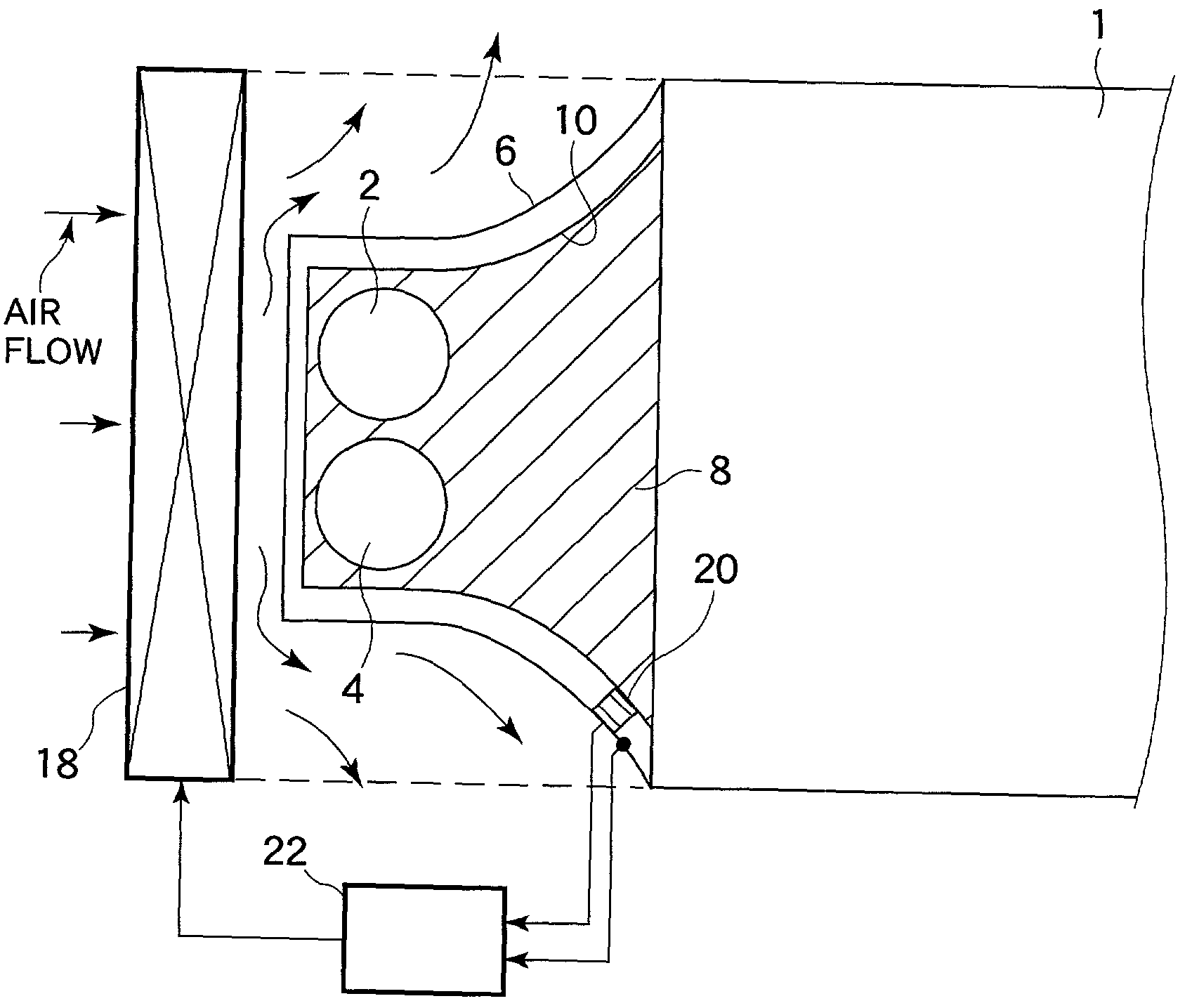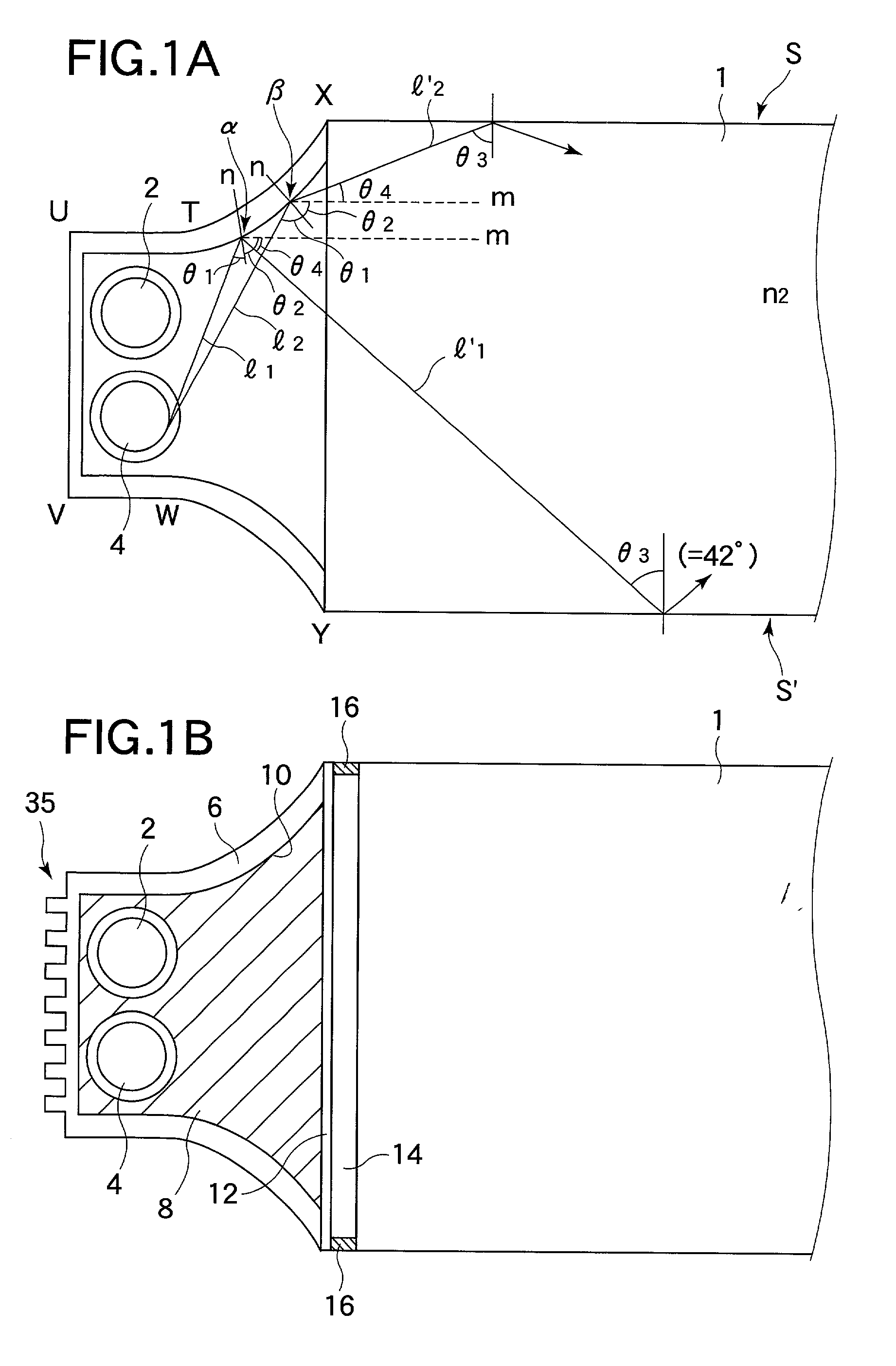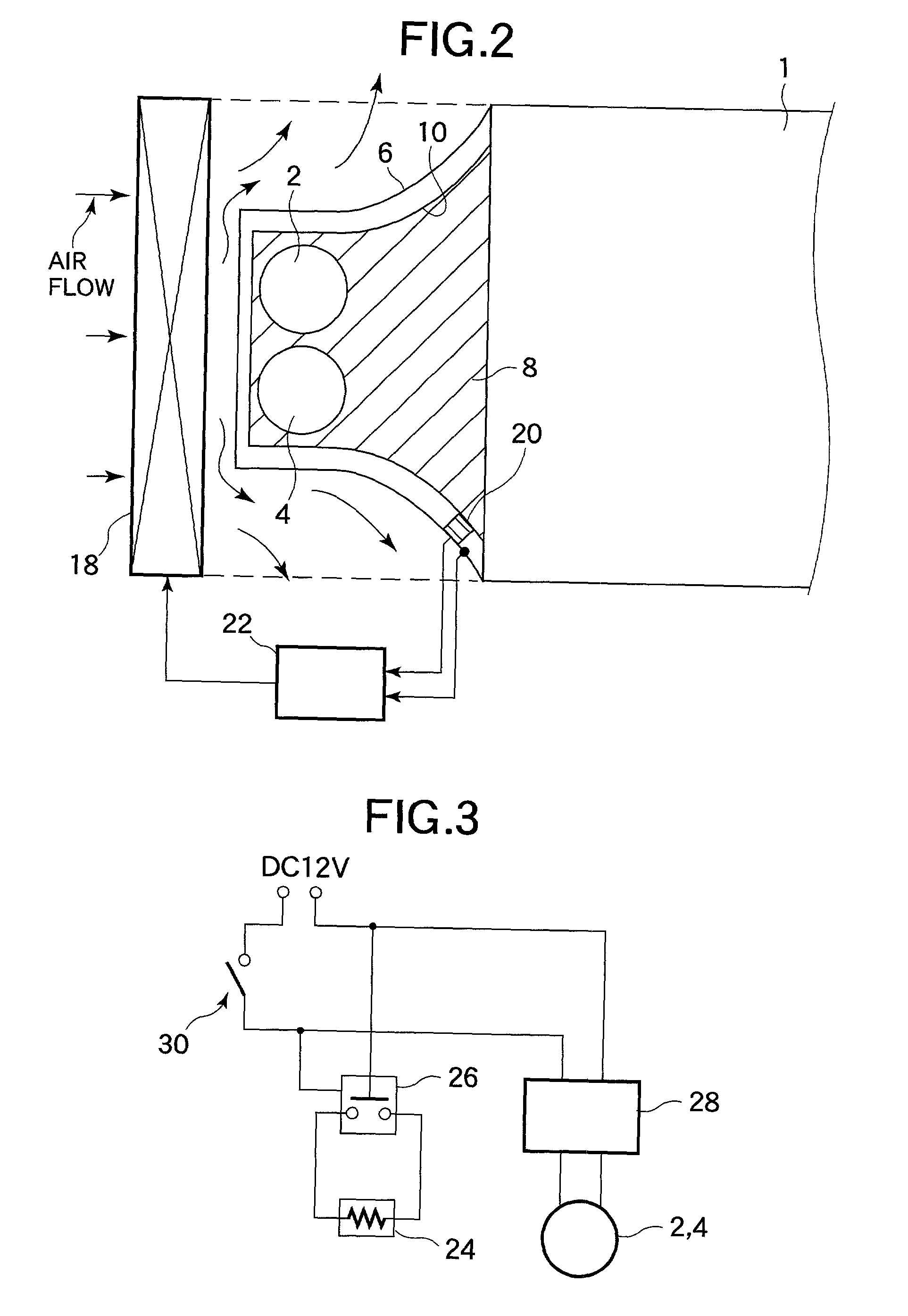Lighting unit
- Summary
- Abstract
- Description
- Claims
- Application Information
AI Technical Summary
Benefits of technology
Problems solved by technology
Method used
Image
Examples
first embodiment
[0127] The backlight unit for liquid crystal displays and others of the invention is described with reference to FIG. 1A through FIG. 5. This embodiment is to provide a backlight unit in which the emitted light is prevented from leaking out of the optical waveguide not undergoing total reflection, even when the light source unit therein is so constituted that the outer peripheral region of each cold-cathode tube therein is filled with a liquid of which the refractive index n1 is nearly the same as the refractive index n0 of the glass material that forms the outer wall of the cold-cathode tube.
[0128] In order that a majority of the emitted light can run through the optical waveguide, some methods mentioned below maybe employed. The first method comprises changing the angle of the emitted light in the previous stage before the light enters the optical waveguide so that the light is specifically oriented in the direction falling within the angle range that meets the optical waveguide c...
second embodiment
[0164] Next described is the backlight unit for liquid crystal displays and others of the invention with reference to FIG. 6 through FIG. 8. This embodiment is to provide a sidelight-type backlight unit in which the light from the cold-cathode tubes can be efficiently reflected toward the optical waveguide.
[0165] The backlight unit of this embodiment is characterized in that the reflective surface of the reflector which is disposed opposite to the optical waveguide relative to the cold-cathode tubes and which reflects the light having been emitted toward it from the cold-cathode tubes is so specifically designed that a majority of the light reflected thereon can run toward the space between the cold-cathode tubes adjacent to each other or toward the space between the cold-cathode tubes and the reflector.
[0166] In this embodiment, the light emitted by the cold-cathode tubes toward the reflector is, after having been reflected by the reflector, prevented from re-entering the cold-cath...
third embodiment
[0187] Next described is the backlight unit for liquid crystal displays and others of the invention with reference to FIG. 9 through FIG. 21. This embodiment is to provide a backlight unit enough for practical use even though the light emission efficiency of the cold-cathode tubes therein is low. For this, we, the present inventors have first analyzed the visible ray efficiency from optical viewpoints. As a result, we have found that, in the cold-cathode tubes described hereinabove for the prior art technique with reference to FIG. 43, about 30 to 50% of all the visible light emitted by the phosphor 138 enters the glass tube 136, and the quantity of light that runs outside the glass tube 136 is extremely small, only about 5 to 20% of all.
[0188] Specifically, we have found that the light having been reflected on the outer surface of the glass tube 136 (refractive index: 1.5 or so) to go back to the discharge region is almost entirely absorbed by mercury, mercury gas and the phosphor ...
PUM
 Login to View More
Login to View More Abstract
Description
Claims
Application Information
 Login to View More
Login to View More - R&D
- Intellectual Property
- Life Sciences
- Materials
- Tech Scout
- Unparalleled Data Quality
- Higher Quality Content
- 60% Fewer Hallucinations
Browse by: Latest US Patents, China's latest patents, Technical Efficacy Thesaurus, Application Domain, Technology Topic, Popular Technical Reports.
© 2025 PatSnap. All rights reserved.Legal|Privacy policy|Modern Slavery Act Transparency Statement|Sitemap|About US| Contact US: help@patsnap.com



